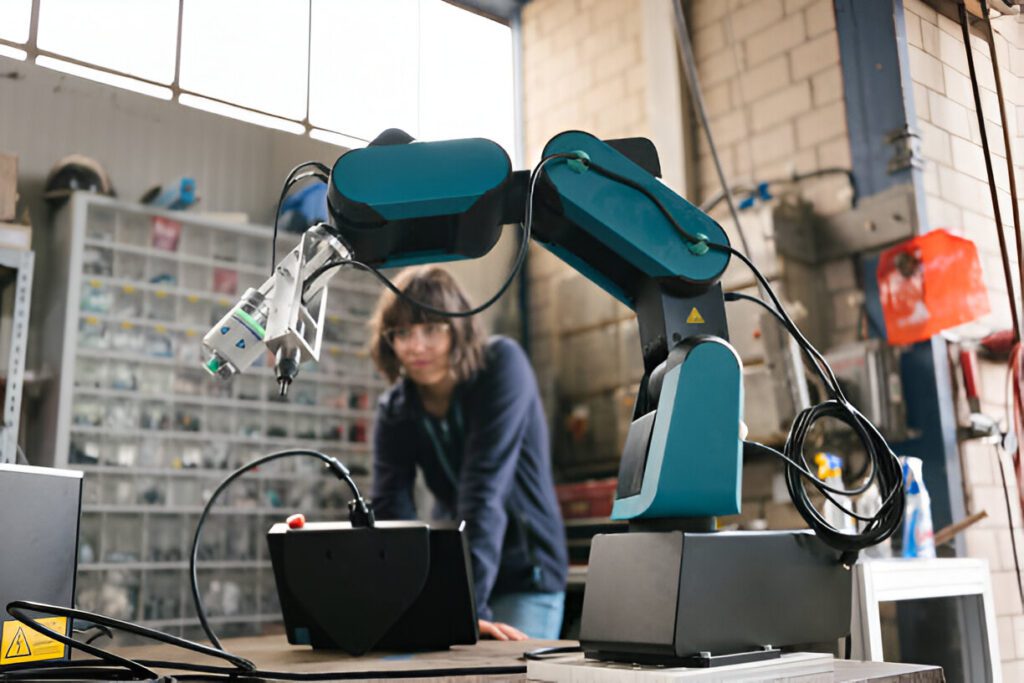STEM education programs has become a critical component in shaping the future workforce and driving innovation. It encompasses science, technology, engineering, and mathematics, and offers students the tools they need to tackle global challenges.
This guide delves into everything you need to know about STEM education programs, covering topics from the basics to career prospects, and highlighting the importance of STEM in today’s world.
What is STEM Education Programs? Understanding the Core Principles and Evolution
STEM education programs refers to the teaching of science, technology, engineering, and mathematics in an integrated manner. The goal is to foster critical thinking, creativity, and innovation, encouraging students to solve real-world problems.
The concept of STEM was popularized in the early 21st century, recognizing that these disciplines are crucial for national competitiveness and future job markets.
The evolution of STEM education has seen it move from traditional, lecture-based teaching methods to more interactive, project-based learning. Students are encouraged to work collaboratively, apply knowledge across disciplines, and use technology to develop solutions. This multidisciplinary approach ensures they can adapt to a rapidly changing world.
Why Studying STEM Education Programs Matters in the Modern World

The relevance of STEM education programs cannot be overstated in today’s digital and industrial landscape. Studying STEM provides the skills required to thrive in an economy increasingly dominated by technology and innovation.
It is not just about learning technical skills; STEM education also cultivates soft skills like problem-solving, teamwork, and adaptability.
Industries like healthcare, information technology, manufacturing, and energy all rely on STEM-trained professionals to develop new products, improve efficiency, and solve complex problems.
Beyond the individual benefits, STEM education is also crucial for global competitiveness, as nations with strong STEM sectors tend to lead in economic growth and technological advancements.
What to Expect in a STEM Education Degree: Courses, Skills, and Career Paths
A STEM education degree covers a broad spectrum of subjects, with students typically focusing on a specific discipline (e.g., engineering, computer science, biology) while gaining foundational knowledge across the STEM fields.
Here’s what to expect during your STEM education programs:
- Courses: You’ll study subjects like mathematics, physics, chemistry, computer programming, engineering principles, and data analysis. Some programs may offer specializations in fields like robotics, biotechnology, or environmental science.
- Skills: You’ll develop both technical skills (coding, data interpretation, design, etc.) and essential soft skills (collaboration, project management, communication).
- Career Paths: Graduates can pursue careers in a wide range of fields, such as engineering, data science, software development, healthcare, environmental science, and even education.
STEM degrees open doors to high-paying, in-demand jobs, with opportunities constantly expanding due to technological advancements.
STEM Education Programs vs. STEAM: The Importance of Integrating the Arts
STEAM adds the “A” for arts into STEM, recognizing that creativity and critical thinking are essential to problem-solving. The integration of arts encourages innovative thinking and design, which are crucial in fields like architecture, product design, and tech innovation.
Incorporating arts into STEM education (as STEAM) fosters creativity in scientific processes, enhancing the ability to think outside the box. This blending of disciplines helps students better understand how scientific principles apply in creative contexts and vice versa, preparing them for a more holistic approach to innovation.
Blended Learning in STEM/STEAM: How Technology Enhances Education
Blended learning combines traditional classroom instruction with online educational resources, offering a flexible and engaging learning experience. In STEM and STEAM programs, blended learning plays a significant role in enhancing students’ understanding of complex concepts.
Technologies like simulations, virtual labs, and augmented reality allow students to experiment with concepts and see real-time results in ways that weren’t possible in traditional settings. This method also allows for personalized learning, where students can learn at their own pace while receiving real-time feedback from instructors.
Inequalities in STEM Education Programs and STEAM Education: Challenges and Solutions
Despite the growing importance of STEM and STEAM education, significant inequalities remain in access to these programs, especially for underrepresented groups like women, minorities, and low-income students. Gender disparities are particularly notable, with women being underrepresented in fields like engineering and computer science.
Addressing these inequalities requires targeted interventions, such as scholarships, mentorship programs, and community outreach to spark interest in STEM from an early age. Additionally, efforts to improve STEM education infrastructure in underserved schools and communities can help bridge the gap and provide more opportunities for all students.
Global Demand for STEM Professionals: Opportunities and Trends

The global demand for STEM professionals continues to rise, driven by technological advancements and the need for innovation in nearly every industry. Fields like artificial intelligence, renewable energy, and biotechnology are creating a surge in job openings that require STEM expertise.
According to labor market data, occupations in STEM fields are growing at a much faster rate than the average for all other jobs. The demand is particularly strong in sectors such as healthcare, software development, and engineering, with countries around the world investing heavily in STEM education to meet these needs.
Top STEM Education Programs Around the World: Where to Study
When it comes to pursuing a STEM education, certain universities and colleges stand out for their strong programs and industry connections.
Here are some of the top STEM education programs worldwide:
- Massachusetts Institute of Technology (MIT) (USA) – Known for its cutting-edge research in science and technology.
- Stanford University (USA) – Offers top-notch programs in computer science, engineering, and AI.
- University of Cambridge (UK) – A leader in STEM research, especially in physics and biology.
- Tsinghua University (China) – One of Asia’s best for engineering and technology programs.
- Indian Institutes of Technology (IITs) (India) – Renowned for their engineering and computer science programs.
How to Choose the Right STEM Education Programs for You
Choosing the right STEM education programs depends on various factors, including your career goals, academic interests, and preferred learning style.
Here’s what to consider when Choosing the right STEM education programs:
- Specialization: Do you want to focus on computer science, engineering, or biology? Identify your area of interest before selecting a program.
- Accreditation and Reputation: Look for programs that are accredited and have a strong reputation for research and job placement.
- Location: Do you prefer studying in-person at a prestigious university, or would an online program suit your needs better?
- Cost and Scholarships: Consider the financial aspects, including tuition fees, availability of scholarships, and other funding options.
STEM Education Programs and the Future of Work: Preparing for AI, Robotics, and Beyond
The future of work will be heavily influenced by advancements in AI, robotics, and other emerging technologies. STEM education is essential in preparing students for this future by equipping them with the technical know-how to develop, manage, and innovate in these areas.
AI and robotics are not only shaping industries but also transforming daily life, from healthcare innovations to autonomous vehicles. Students with STEM education will be at the forefront of these developments, driving the next wave of technological progress.
Scholarships, Grants, and Funding Opportunities for STEM Students studying STEM Education Programs
Financing a STEM education can be challenging, but numerous scholarships and grants are available for students pursuing STEM degrees. Some prominent options include:
- National Science Foundation (NSF) Scholarships (USA)
- Google Student Scholarships for Computer Science Students
- Global STEM Scholarship Programs
- Women in STEM Grants – aimed at increasing gender diversity in STEM fields.
Students should research available opportunities at the institutional, national, and global levels to secure financial aid.
STEM Education Programs Success Stories: Inspiring Innovators and Leaders

STEM education has paved the way for some of the world’s most impactful innovators. From Elon Musk (SpaceX, Tesla) to Mae Jemison (the first African-American woman astronaut), STEM graduates have made history with their groundbreaking contributions.
Their stories not only inspire current students but also demonstrate the limitless possibilities that a STEM education offers. By combining their technical skills with creativity and vision, these leaders have changed industries and improved lives around the globe.
Conclusion on STEM Education Programs
In conclusion, STEM education programs are key to preparing the workforce of the future, offering students the skills and knowledge they need to innovate and excel in a rapidly evolving world. Whether you’re considering a degree in STEM or looking to enhance your knowledge, this comprehensive guide highlights the importance, opportunities, and paths available through STEM education.
Feel free to share this article using the social media handles below


